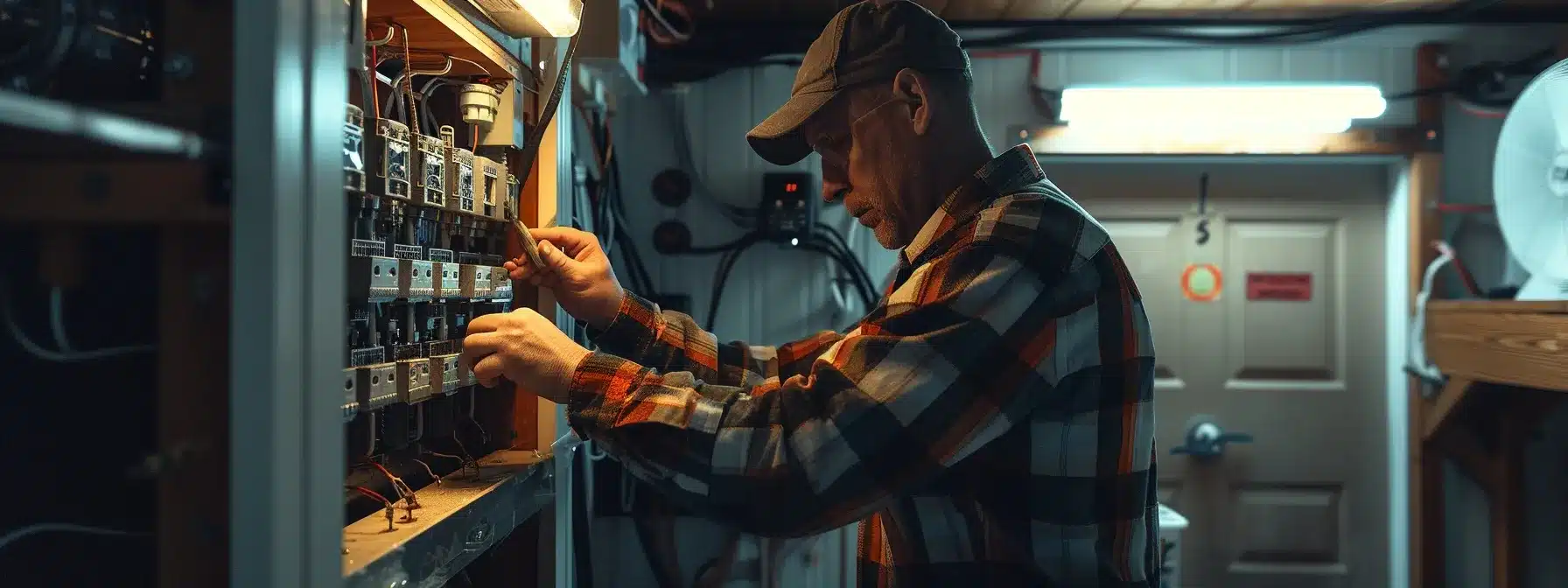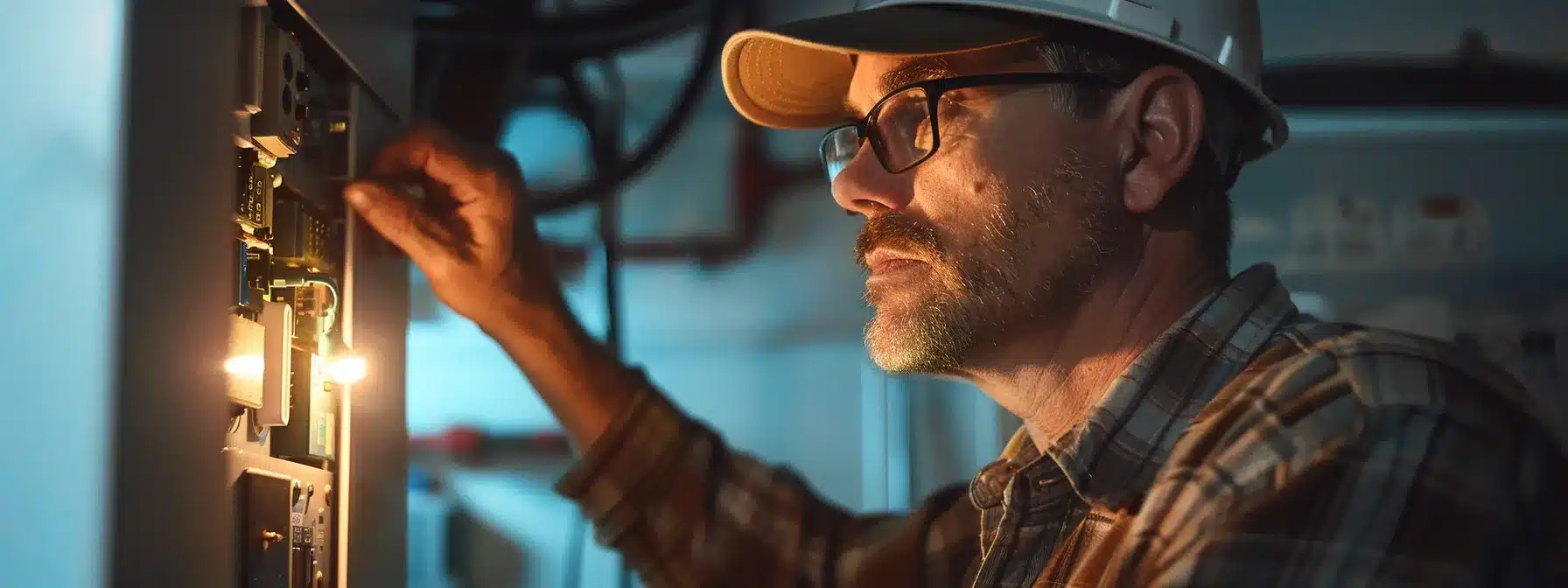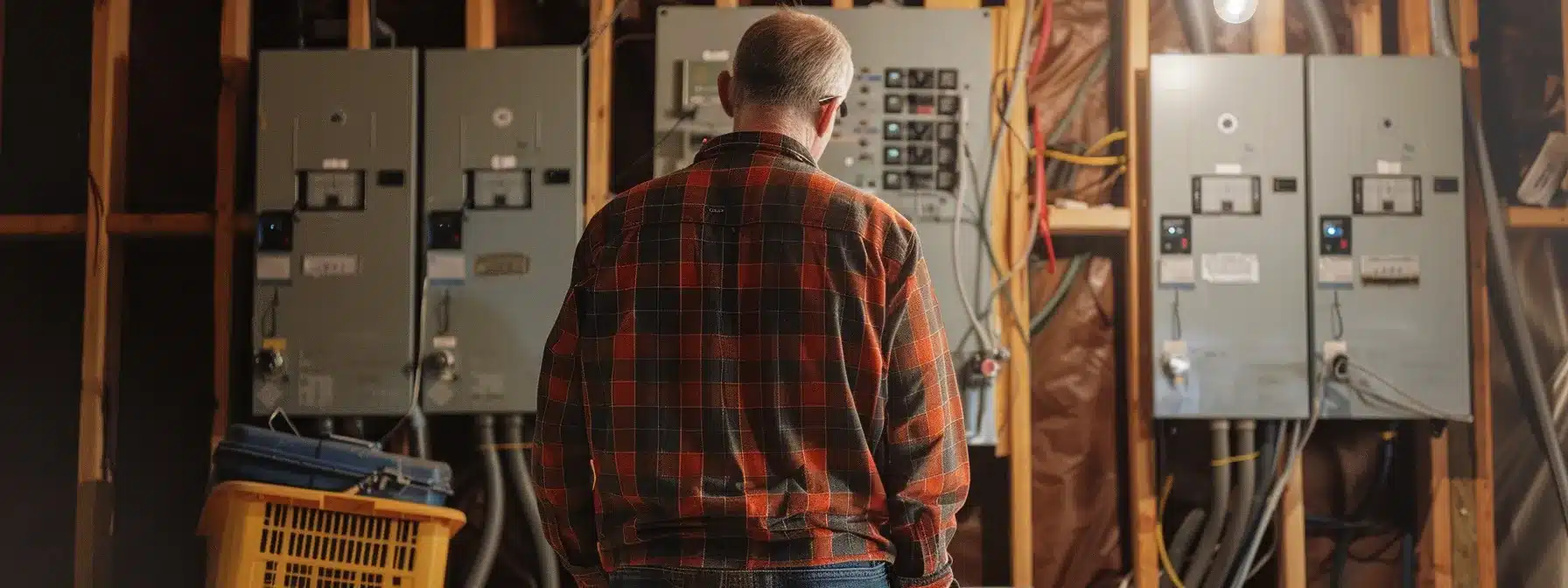Circuit breaker maintenance plays a crucial role in ensuring the safety and efficiency of your home’s electrical system. While some tasks can be handled by knowledgeable homeowners, others require the expertise of an emergency electrician. Factors such as airflow, climate, and dust accumulation can impact the performance of your circuit breaker, making regular maintenance essential. In this article, we’ll explore when to tackle circuit breaker maintenance yourself and when to call in the professionals, helping you make informed decisions about your home’s electrical safety.
Key Takeaways
- Regular circuit breaker maintenance is crucial for home electrical safety and efficiency
- Recognizing signs of circuit breaker problems helps prevent major electrical issues
- Some maintenance tasks are suitable for DIY, but complex issues require professional expertise
- Proper documentation and preparation facilitate smoother professional maintenance services
- Weighing DIY versus professional maintenance involves considering safety, cost, and long-term efficiency
Identifying Signs Your Circuit Breaker Needs Attention

Homeowners in Lexington often overlook their circuit breakers until a problem arises. These essential components of a home’s electrical system, often tucked away in basements or utility rooms, need regular attention. From frequent tripping caused by overloaded circuits to unusual noises that might indicate a faulty condenser, recognizing the signs of a troubled breaker is crucial. While some issues, like installing a surge protector, can be DIY projects, others, especially those involving central heating systems, require professional expertise. Let’s explore how to identify when your circuit breaker needs attention and when it’s time to call in the emergency electrician experts.
Spotting Frequent Tripping and Its Causes
Circuit breakers trip to protect homes from electrical overloads, but frequent tripping indicates a deeper issue. Overloaded circuits, short circuits, or ground faults often cause this problem. A faulty compressor in air conditioning units can also lead to repeated tripping.
Homeowners should use their sense of smell to detect burning odors near the breaker box, which may signal overheating wires. Installing a smart thermostat can help monitor energy usage and prevent overloads. However, if tripping persists, it’s time to call a professional electrician.
Sometimes, the issue lies within the breaker itself. A loose connection to the ground wire or a clogged breaker mechanism can cause malfunctions. These problems require expert attention to ensure safety and prevent potential electrical fires.
Recognizing Unusual Noises or Odors From the Breaker Box
Circuit breakers shouldn’t make noise or emit odors during normal operation. Buzzing, hissing, or crackling sounds from the breaker box often indicate loose connections or faulty wiring. These issues can lead to overheating and potential power outages if left unaddressed.
Strange smells, particularly burning odors, near the breaker box demand immediate attention. These smells might stem from overheated wires, melting insulation, or even a malfunctioning furnace connected to the circuit. Homeowners should avoid DIY troubleshooting in these situations and contact a professional electrician promptly.
During home construction or renovation, dust and debris can accumulate in the breaker box, potentially causing issues. Regular inspection of the breaker box, including checking for dust buildup in ducts and vents, can prevent problems before they start. However, cleaning the breaker box interior should be left to professionals to ensure safety.
Knowing the signs of a troubled circuit breaker is crucial, but what can you do about it? Let’s explore some simple maintenance tasks that homeowners can safely perform to keep their electrical systems in top shape.
Simple DIY Maintenance Tasks for Homeowners

Maintaining a circuit breaker doesn’t always require professional help. Homeowners can perform several simple tasks to keep their electrical systems in good shape. Regular cleaning and inspection can prevent issues caused by dust buildup or water damage, especially around the air handler. Testing circuit breakers ensures they function correctly, reducing the risk of electrical hazards. While some maintenance tasks are DIY-friendly, it’s crucial to know when to call in experts, particularly for complex issues involving heat transfer or thermostat problems. By understanding these basics, homeowners can keep their electrical systems running smoothly and safely.
Cleaning and Inspecting Your Circuit Breaker Safely
Safety comes first when inspecting and cleaning a circuit breaker. Before starting, turn off the main power supply and use a voltage tester to ensure no electricity flows through the system. This simple step greatly reduces the risk of electrocution or short circuits during maintenance.
Homeowners can safely clean the exterior of the breaker box using a dry cloth or vacuum with a brush attachment. Pay special attention to areas around pipes and power cords, as these spots often accumulate dust and debris. Avoid using water or cleaning solutions, which can damage the electrical components.
While cleaning, visually inspect the breaker box for signs of wear, rust, or damage. Look for loose connections, frayed wires, or burnt marks that might indicate overheating. If any issues appear, it’s best to call a professional electrician rather than attempting repairs yourself.
Testing the Functionality of Your Circuit Breakers Regularly
Regular testing of circuit breakers demands attention to ensure they function correctly when needed. Homeowners should test each breaker every few months by switching it off and on, listening for any unusual noise that might indicate a problem. This simple check can prevent issues with appliances, including those with heating elements.
When testing, pay close attention to how the breaker feels when switching. A breaker that’s difficult to reset or doesn’t click firmly into place may need replacement. Unlike old fuse boxes, modern circuit breakers should operate smoothly and reliably.
After testing, homeowners should record the date and results, perhaps in a digital file linked to their email address for easy reference. This log helps track the breaker’s performance over time and can be valuable information for electricians if issues arise later.
Mastering basic electrical maintenance can boost your confidence, but some issues require expert hands. Recognize the fine line between DIY and professional territory to keep your home safe and functioning smoothly.
Evaluating When to Call a Professional Electrician

Maintaining circuit breakers involves more than just flipping switches. While some tasks are suitable for homeowners, complex issues demand professional expertise. Electrical panel problems can affect indoor air quality, especially when linked to HVAC systems. A faulty contactor or improper electrical wiring might lead to air filter inefficiency or pressure imbalances. Recognizing when to call an expert is crucial for safety and optimal system performance. Let’s explore how to assess the complexity of electrical issues and evaluate the risks before attempting major repairs yourself.
Understanding the Complexity of Electrical Panel Issues
Electrical panels house complex systems that require careful inspection and understanding. Homeowners might notice issues like circuit breakers tripping frequently or air conditioning units blowing cold air inconsistently, signaling potential electrical problems. These symptoms often indicate underlying issues that go beyond simple fixes.
The complexity of electrical panels extends beyond visible components. Hidden issues like pest control problems or faulty valves can affect the system’s performance. Pest infestations can damage wiring, while malfunctioning valves in connected appliances might cause electrical load fluctuations, leading to panel issues.
Understanding the intricacies of electrical loads and how they affect panel performance is crucial. Homeowners should recognize that seemingly unrelated problems, like inconsistent heating or cooling, might stem from electrical panel issues. When faced with complex symptoms or recurring problems, consulting a professional electrician ensures proper diagnosis and safe resolution.
Assessing Risks Before Attempting Major Repairs
Homeowners should carefully assess the risks before attempting major electrical repairs. Working with live wires and metal components can lead to severe injuries or electrocution.
Complex electrical systems often require specialized knowledge and tools. Attempting to repair a faulty pump or rewire a circuit without proper expertise can result in costly damage or create fire hazards. Homeowners should consider their skill level and the potential consequences before tackling major electrical projects.
When in doubt, it’s always safer to consult an expert. Professional electricians have the training and equipment to handle complex repairs safely. They can accurately diagnose issues and provide lasting solutions, ensuring the home’s electrical system remains reliable and secure. Here’s a breakdown of common electrical tasks and their risk levels:
Circuit breakers protect your home, but they need professional care too. Let’s explore how to get your home ready for expert circuit breaker maintenance.
Preparing Your Home for Professional Circuit Breaker Maintenance

Preparing for professional circuit breaker maintenance involves more than just making a phone call. Homeowners should document any unusual voltage fluctuations, strange odors, or signs of wear they’ve noticed. This information helps electricians pinpoint issues quickly. Ensuring clear access to electrical panels is crucial for efficient service and safety. Homeowners should also be aware of any warranty coverage on their electrical systems, as this may affect maintenance procedures. By taking these steps, homeowners can facilitate a smoother maintenance process and potentially prevent hazardous situations, such as those caused by faulty combustion appliances connected to the electrical system.
How to Document Issues and Gather Information for Electricians
Homeowners should keep a detailed log of electrical issues they’ve noticed. This log should include dates, times, and descriptions of problems like flickering lights or tripping breakers. Noting any unusual odors, especially near the power supply, can help electricians identify potential overheating or wiring issues.
Taking photos or videos of visible problems can provide valuable visual evidence for electricians. Capturing images of dirt accumulation around circuit breakers or signs of wear on wiring insulation helps technicians assess the situation before arrival. Homeowners should also document any recent changes to their electrical system or major appliance installations.
Gathering information about the home’s electrical system history is crucial. This includes records of past maintenance, upgrades, or repairs. For homes with air conditioning systems, noting any refrigerant leaks or performance issues can help electricians understand the full scope of potential electrical problems. Here’s a simple table to organize this information:
Ensuring Clear Access to Electrical Panels and Safety Measures
Homeowners should clear the area around their electrical panels to ensure easy access for electricians. Remove any stored items, furniture, or clutter that might obstruct the circuit breaker box. This clearance allows technicians to work safely and efficiently, especially when dealing with complex systems like heat exchangers or boilers.
Proper lighting in the area surrounding the electrical panel enhances safety during maintenance. Install a bright, reliable light fixture near the circuit breaker box to help electricians see clearly while working. Good illumination reduces the risk of errors and accidents, particularly when servicing components like evaporators or intricate wiring systems.
Homeowners should familiarize themselves with the main power switch’s location and operation. In case of emergencies, knowing how to quickly shut off power can prevent accidents and protect both the homeowner and the electrician. This knowledge proves especially valuable when dealing with unexpected issues during maintenance of critical systems like boilers or central air conditioning units.
Don’t risk your safety or costly mistakes with DIY circuit breaker maintenance. Let’s explore the financial implications of tackling this job yourself versus hiring a seasoned professional.
Cost Considerations in DIY vs. Hiring an Expert

Homeowners often grapple with the decision between DIY circuit breaker maintenance and hiring professionals. While DIY approaches can save money on labor costs, they may not always lead to optimal energy conservation. Simple tasks like replacing a light switch might seem tempting, but complex issues involving HVAC systems or humidity control often require expert knowledge. Understanding the potential savings and risks of DIY maintenance versus professional services is crucial for making informed decisions about electrical system upkeep. Let’s examine the financial implications of both approaches, considering factors such as long-term energy efficiency and the potential costs of mistakes.
Breaking Down the Potential Savings From DIY Maintenance
Homeowners can save money by performing simple circuit breaker maintenance tasks themselves. Using a multimeter to test voltage and continuity can prevent costly service calls for minor issues. DIY enthusiasts can also clean and tighten connections, potentially avoiding problems that could lead to expensive repairs down the line.
However, complex tasks involving heating systems or printed circuit boards often require professional expertise. While attempting these repairs might seem cost-effective initially, mistakes can result in significant damage and higher long-term expenses. Homeowners should consult a FAQ guide or manufacturer’s manual before deciding whether a task is within their skill level.
Regular DIY maintenance, such as checking for proper drainage in HVAC systems connected to the electrical panel, can extend the life of equipment and improve energy efficiency. This proactive approach often leads to lower utility bills and fewer emergency repairs, offering substantial savings over time. However, homeowners must weigh these potential savings against the risks of tackling complex electrical work without proper training.

